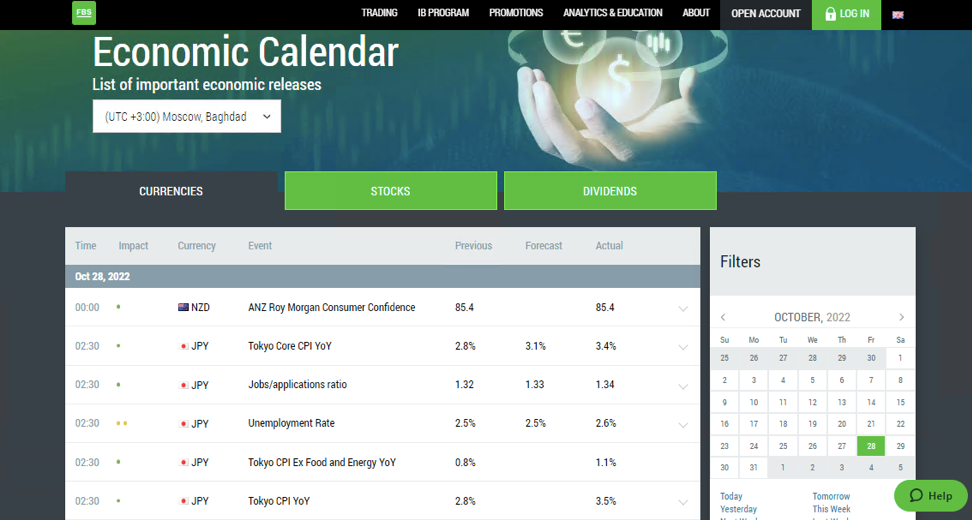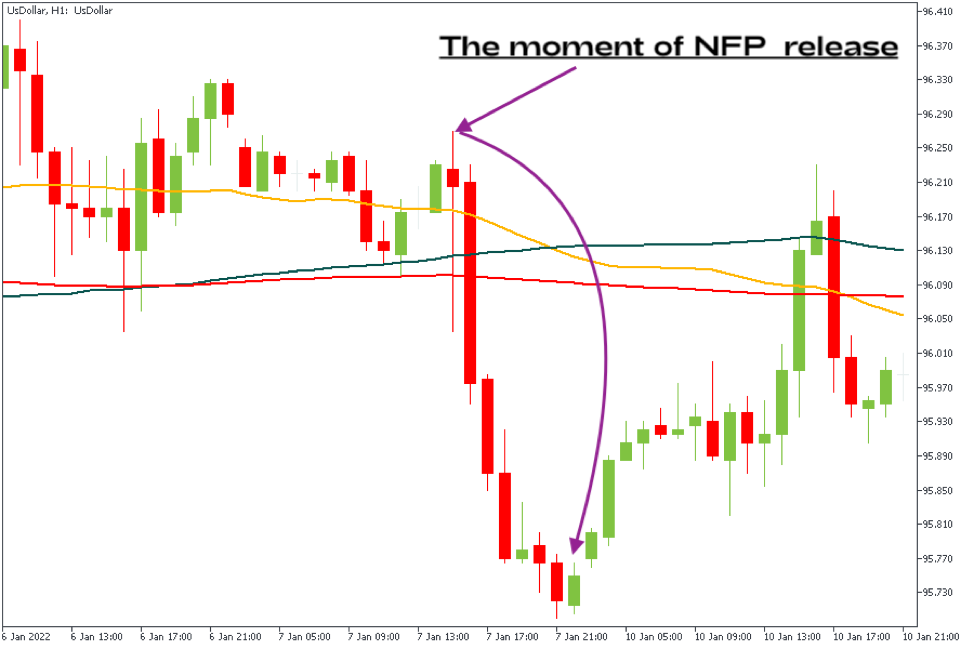The economic calendar is an essential part of a Forex trader's arsenal. The calendar shows the time, date, and potential impact of the major domestic and international economic events on currency prices. Let’s talk about this helpful instrument in detail.
What is an economic calendar in Forex?
Certain events affect the foreign exchange market in significant but predictable ways. These recurring events affect market sentiment and trading volume and act as indicators that help to identify valuable trading opportunities. They can also act as indicators of future spikes in volatility, helping traders stay prepared and employ appropriate risk management strategies.
With the economic calendar you can plan your strategy because you will know what events are going to be published in the coming days and weeks. You can also get an update of the key economic parameters that influence financial markets. These include US Non-Farm payrolls, interest rate announcements, inflation data, manufacturing data, GDP, and more.
How does economic calendar work?
Economic calendars have many versions. They typically describe the event, its scheduled date and time, and the previous, expected, and actual values. The predicted value tells us what numbers the market expects from a release. It can be a percentage value signaling a change in the indicator’s level or an absolute value, for example, the level of an index in points. The previous value is the last recorded value of the report. These numbers – especially the forecast – affect market sentiment and price movement ahead of the actual event.

For example, if the market expects a country's unemployment figure to be worse than the previous one, the value of the national currency falls against other currencies. It happens because the rise in the unemployed indicates the nation's worsening economic health, making the currency less attractive to investors. Then, many traders take a short position on this currency, and its price declines.
Let's consider a real-life example. The expected NFP results as of January 7, 2022, were 426,000 jobs added. The actual result disappointed, with only 199,000 new jobs. As a result, volatility increased, and the dollar index lost about 500 points.
During NFP release, gold and the USD pairs are the most affective ones.

Most calendars have a system that separates important events from those of medium and low importance. The US is the world's largest economy, and the US dollar is the world's reserve currency. As a result, economic events related to the US tend to affect assets worldwide. Similarly, news releases from major economies such as the UK, EU, China, and Japan also significantly impact global financial markets. Therefore, traders need to research to assess the event's impact on their positions.
The scheduled date and time are also critical to entering or exiting the market at the right moment. The estimated time in the economic calendar should align with the trader's local time zone to prevent miscalculations.
Top news events in Forex trading
When it comes to currency trading, a few events have more economic impact than most. Let’s go through them.
Central Bank Interest Rate Decisions
Central banks monitor the country's economic health by raising and lowering interest rates and conducting other monetary policies. An increase in interest rates can push the national currency higher relative to other currencies and vice versa.
Consumer Price Index (CPI)
CPI is a measure of inflation. Persistently high inflation rates can make the central bank raise interest rates to reduce the money supply in the economy. As mentioned earlier, a rate hike will push the national currency up in the short term.
Purchasing Manager's Index (PMI)
PMI reflects the state of manufacturing activity in a country. A level above 50 indicates economic growth compared to the previous month and is positive for the currency.
US NFP
While a country's unemployment data is essential for tracking the price direction of its currency, the US NFP report is one of the most significant events for Forex traders. Released on the first Friday of every month, it tracks the US employment level (excluding farmers, the self-employed, and some other factions). It's also crucial to the US Federal Reserve's future interest rate stance.
How to read and use Forex economic calendar
The economic calendar is used to predict the moves of a currency pair. Various financial resources evaluate the state of the market before the release and suggest what numbers will be published. However, instead of placing orders based on them, traders could use this information in the context of their technical analysis.
Traders can study the current market trend, price direction, and strength and identify support and resistance levels before the news releases. If positive numbers are expected, traders may see a surge in price action between these levels. Intraday traders can take advantage of price volatility leading up to the major events. More conservative traders may want to wait for volatility to subside after the market has digested the information.
Here is a popular way to trade on economic releases:
- Refrain from trading in the first 15 minutes after the release.
- The next step is to check the candlestick chart for an inside bar within the starting bar. The high and low of this bar are the triggers for trading.
- Traders can trade in the direction of a breakout when the next bar closes above or below the inside bar.
- Stop loss can be set at 30 points.
- Most of the movements occur within 4 hours. Thus, traders can exit their positions within 4 hours. Here the profit target depends on time.
Essential news releases can lead to slippage, which means that a trade with a 1% risk can end up with a 5% loss. Because of this unpredictability, Forex traders often close positions minutes or hours before a report is released. This means that market liquidity may also fall. So, traders should behave attentively.
Conclusion
The economic calendar is an extremely useful tool not only for fundamental but for technical analysis as well. Don’t forget to check it at least once a week in order to predict possible market fluctuations.








No comments:
Post a Comment